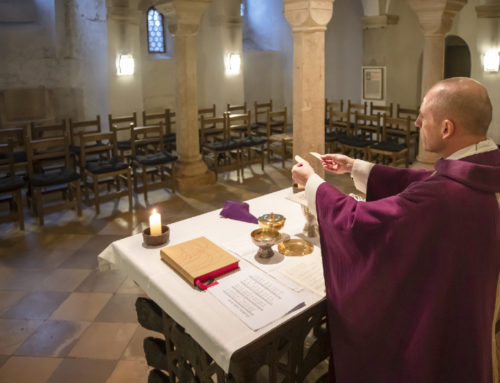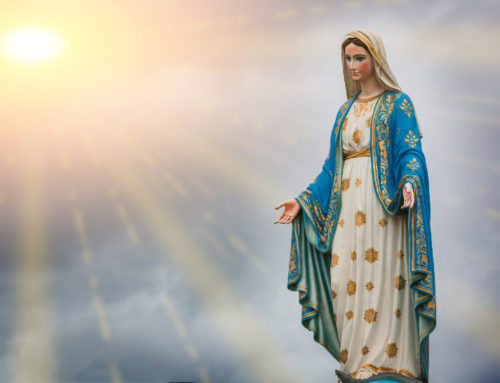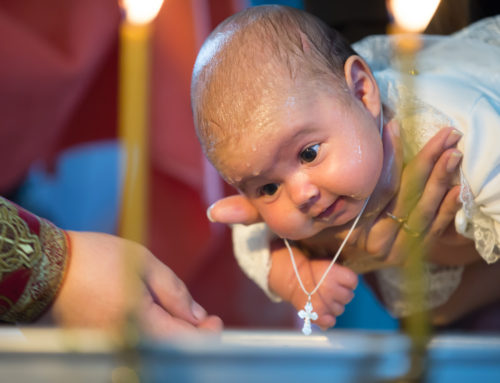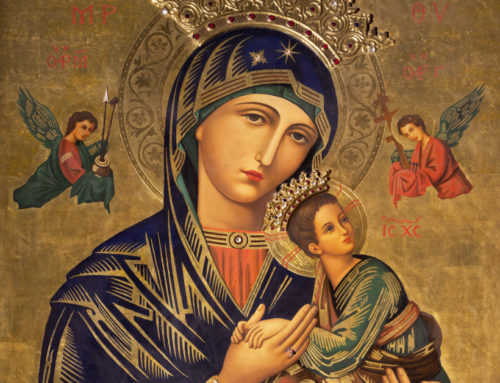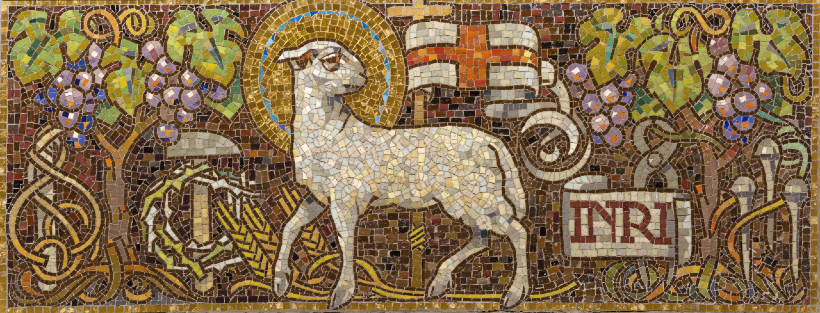
photo of the symbolic mosac of Lamb of God by Renáta Sedmáková
Does Rite mean the same thing as Church?
The term rite has several meanings. First, a “rite” is a particular ritual such as the Mass, baptism, marriage, or even a way of doing something that has become ritualized over time. But it also has a bigger meaning. In the context of this book, it refers to the rituals and customs of particular churches: the way in which they celebrate the Liturgy, the sacraments (or, as they are called in the East, the “mysteries”), and the form of chant that is used in these churches.
In the lower-case form (rite), the term refers to a specific ritual function such as baptism or anointing of the sick. In the capitalized form (Rite) it refers to a particular collection of rituals used by one or more churches. and, to complicate this a bit more, there is another sense — the word can be used to indicate a collection of rites, such as the Rite of Christian Initiation of Adults (RCIA). In this book we generally talk about “Rite” in the sense of one or more churches. There is another term that we use that should be mentioned in this context. That term is sui iuris, which means “in its own right” and refers to the fact that the Eastern Catholic Churches exist “in their own right” as independent churches.
Let’s look at an incorrect usage to help put this in perspective. It would be wrong to say “Maronite Rite Church” or Melkite Rite Church,” since the Maronites are technically part of the Syriac Rite and the Melkites are part of the Byzantine Rite.
Based upon your answer to Question 1 (in Introducing Eastern Churches part 1), it seems that we aren’t all Roman Catholics. Is that true?
Yes, that’s true. The term Roman Catholic was first coined by the Church of England (Anglican Church) as a way of distinguishing between themselves (Anglican Catholics) and the Catholics who followed the pope in Rome (Roman Catholics). While this term has never been a part of the official title of the Catholic Church, it can be thought of as synonymous with the more correct term Latin Rite Church, which is sometimes shortened to Latin Church. So, in the primary meaning, not all Catholics are Roman Catholics.
The second sense, and one commonly used, is that of Catholics who are united with Rome. This sense is technically incorrect but seems to have sufficient popular usage to be addressed here. Most Eastern Catholics would deny that they are “Roman Catholics” — with one significant exception. Members of the Melkite Greek Catholic Church might identify themselves as Rum Katolique, which translates, freely, as “Roman Catholic,” but it actually refers to the “New Rome” (that is, Constantinople). The Melkites would, however, agree that they are united with Rome and acknowledge the primacy of the Holy Father, the Pope of Rome.
Excerpt from Faulk, Edward. 101 Questions and Answers on Eastern Catholic Churches. (Paulist Press: Mahwah, NJ) 2007.

